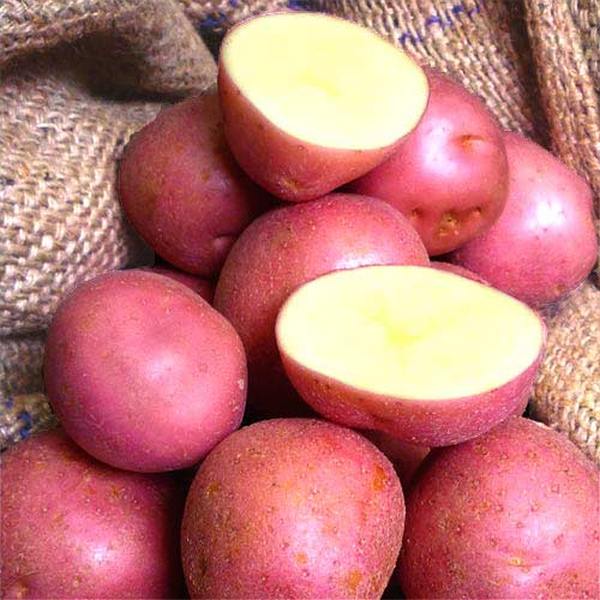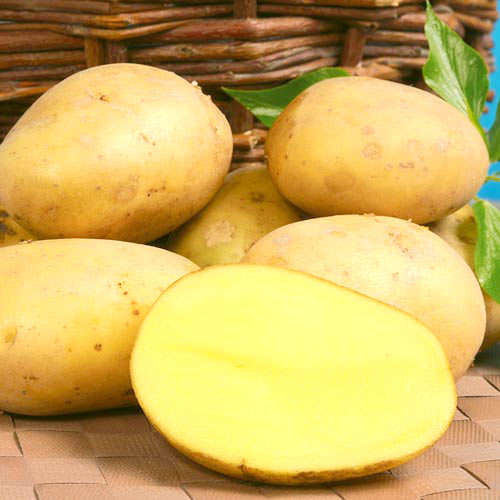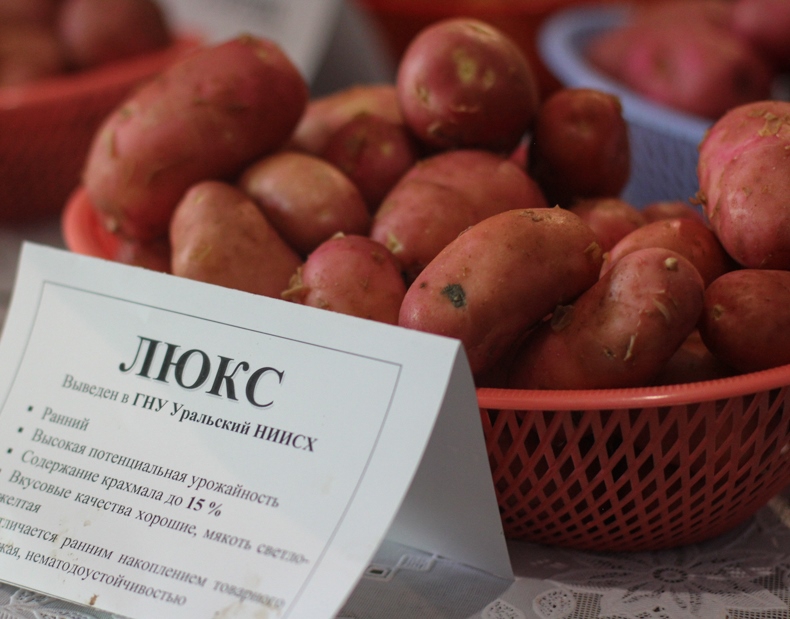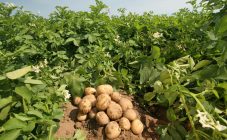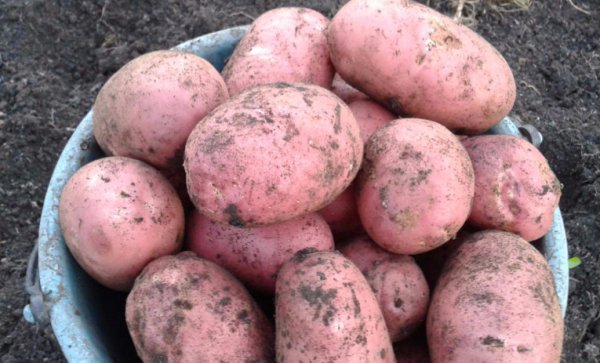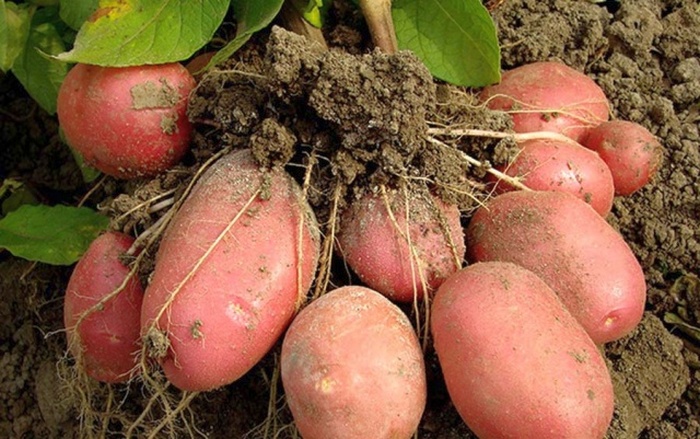Due to its popularity, potatoes are the staple food crop in many countries around the world. This was facilitated by the good adaptability of the potato to any growing conditions: cold climate, poor soil, temperature fluctuations. European breeders have long been leaders in breeding varieties with high yields for the northern regions. Russian researchers also devote a lot of time to studying the features and identifying patterns. Therefore, breeders are working in each separate region of Russia, developing new varieties that will show high yields and immunity against diseases in a particular region.
History of creation
Kamensky's potatoes were bred by Ural breeders and included in the Register in 2009. Scientists of the Ural Research Institute of Agriculture managed to endow this variety with the qualities of the best elite specimens: high yield, resistance to major pests and infections, excellent taste and unpretentiousness.
Description
The Kamensky potato variety was bred specifically for regions with a temperate climate, especially for the Ural, West Siberian and Volga-Vyatka regions. At the same time, its unpretentiousness and endurance make it possible to obtain high yields in any conditions, in Moscow and the region, and even more so in the southern regions with their fertile soils and warm climate, gardeners receive record yields.
Kamenskiy belongs to early-ripening potato varieties, the first tubers can be dug up in 1.5 months after planting and young potatoes can be eaten. The green part of the plant is very lush, with a thick trunk and elastic bright leaves. The tubers are round and slightly elongated. The peculiarity of the variety is a double thick peel of a bright pink color, thanks to this property, potatoes are stored for a very long time. Inside, the fruit is pale yellow, dense. High starchiness allows using potatoes for frying and cooking, they do not fall apart. In general, this variety belongs to the table, which allows you to cook it in any way.
Characteristics of Kamensky potatoes
| Parameter | Value |
|---|---|
| Productivity, c / ha | Maximum 550 |
| Ripening period, months | 2 |
| 1 branch grows fruit, pieces | Maximum 25 |
| Weight of 1 tuber, kg | 0.13 |
| Starch content,% | 18 |
| Bush height, m | 0.7 |
| Safety in winter,% | 97 |
Growing features
The success of growing potatoes depends not only on the quality of the planting material, but also on the correct planting and further care.
Description of the stages:
- Material preparation. The best yield indicators are given by varietal seed potatoes. You can buy it at farmers' markets, large agricultural producers and specialized gardening stores. But you can also prepare material from the tubers of the harvest last year. To do this, during harvesting, you need to select fruits from the strongest bushes. They should be of the correct shape and approximately the same size, about 5 cm in diameter, without flaws, chips or cuts;
- About 20 days before planting, the tubers must be removed from the storage location for germination. The optimum temperature for the emergence of sprouts is + 10… + 20 ˚C;
- Landing.Since potatoes are not whimsical to growing conditions, they can be planted already in the first decade of May. The planting depth is 15 cm. The soil can be pre-fed with a mineral composition. On particularly poor soils, the preparatory period begins in the fall: the plot planned for planting is plowed up and rotted manure is introduced. Fresh manure cannot be used, as it negatively affects the quality of the tubers. Planting is carried out in the standard way: in rows with a gap of 35 cm and a row spacing of 70 cm;
- Care. Kamensk potatoes tolerate drought very well, so they do not need special watering. However, for better development of the root system, it is worth periodically watering the site before flowering. In the future, watering is not required. But it is worth paying attention to loosening, since tubers develop better in soft soils. Loosening, as a rule, is carried out simultaneously with hilling and removing weeds. Hilling is done 2-3 times. The first time - when shoots appear, about 10 cm in height, the second hilling - after 15-20 days, when the shoots reach 30 cm in height. If necessary, you can huddle again after 10 days, if the soil is very heavy and lumps heavily. Top dressing is not a prerequisite for growing the Kamensky variety, but on poor or depleted soils, fertilization will have a positive effect on the amount of the harvest collected as a result. The growth of the green part of the plant occurs with the introduction of nitrogen fertilizers, and the tubers gain weight and are poured after potash and phosphorus dressings. Among diseases and pests, the danger for this variety is the nematode - small worms of about 1 mm, which in large numbers penetrate to the root system, suck and draw out the juice, depriving the entire plant of nutrients. Treating the soil with urea helps to successfully cope with this parasite;
- Harvesting. After 2 months from the moment of planting, the fruits are fully ripe. Harvesting is best done on a sunny warm day so that the dug up potatoes can dry out in the sun. Before laying the tubers for long-term storage, they should be sorted out, dubious, cut, rotten fruits should be removed so that they do not spoil the healthy harvest in the future.
Advantages and disadvantages
| pros | Minuses |
|---|---|
| Drought tolerant | Easily affected by potato nematode |
| Doesn't require good lighting | Capricious about loosening the soil |
| Suitable for cold climates | Germination at a temperature of +3 ˚С |
| Well tolerates long distance transportation | |
| Possesses high preservation in winter | |
| Has immunity from the Colorado potato beetle | |
| Taste qualities are found to be close to ideal |
Kamensky's potatoes are a very successful example of Russian breeding. This variety has been adopted by many enterprises, since it allows you to get a rich harvest with minimal financial and labor costs, which means it is ideal for growing on an industrial scale. Also, this variety is well suited for beginner gardeners, as it does not require much effort and knowledge.
